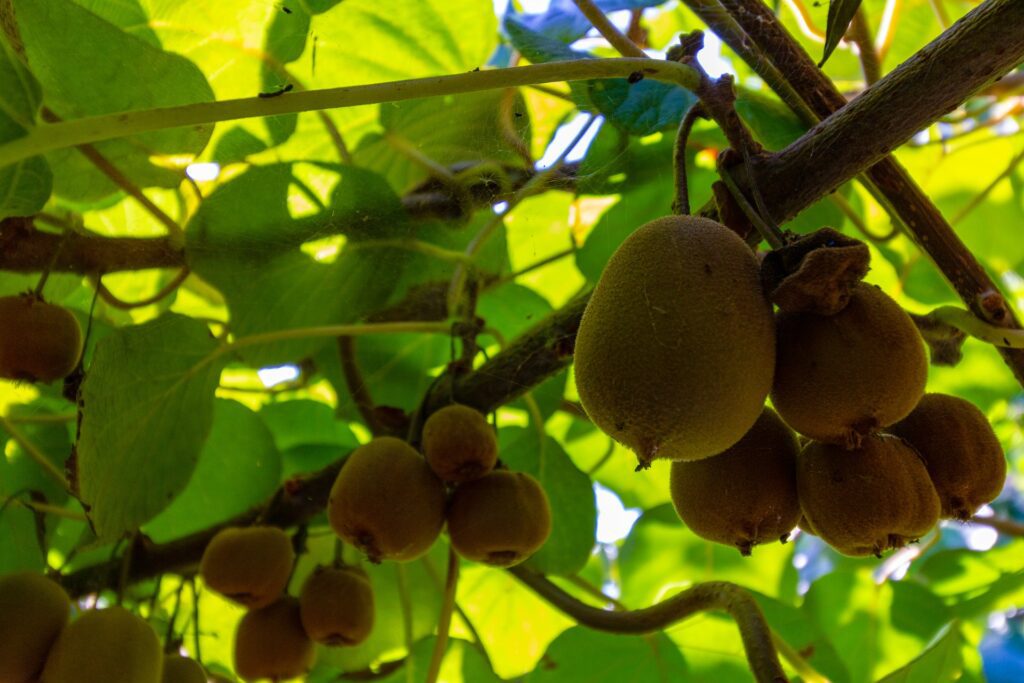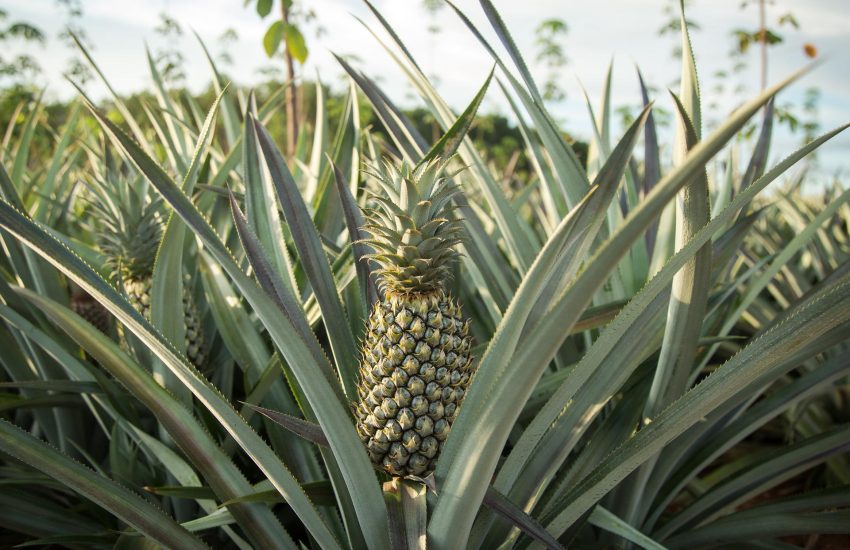Kiwi Farming: How to Plant and Harvest
Kiwi farming can be done successfully if the necessary care and attention are shown. Kiwi, one of the most exotic fruits, is in heavily demanded and has a high economic value. Kiwi is more popularly known as Chinese gooseberry. Kiwi is not only rich in taste but also has high nutritional value. The nutrients are abundant and kiwi ultimately serves as one of the healthiest sources of diet.
Kiwi is also very famous as it is excellent in medicinal value. Kiwi is a rich source of vitamins. Kiwi is heavily consumed for availing the benefits of vitamins B and C. this fruit is also rich in various minerals. Phosphorous, potassium, and calcium are present in abundance in kiwi. Kiwi is also highly preferred as it can be consumed in many forms. Kiwis can be eaten separately by themselves or can be combined with other fruit dressings.
Kiwi can also be consumed in processed forms which makes the export of kiwi quite easy. Kiwi in its processed forms is also popular. Kiwis can be used to make various types of squash and wine. Kiwi is famously grown in New Zealand, China, and The United States of America. In India, kiwi is grown in Himachal Pradesh, Jammu and Kashmir, Uttar Pradesh, and so on.

Soil requirements in kiwi farming
Like most plants, kiwi also requires certain conditions to be taken care of regarding the soil that they are grown in. The most preferred type of soil to be grown in is loamy soil. The deep and yellow-brown loamy soil is the best type of soil to grow the kiwis. The soil also has to be well drained. There is a need for nitrogen, phosphorous, and potassium for the growth and development of these plants.
Thus, the soil has to be rich in these. Else, the necessary application of fertilizers ought to be followed. Fertilizers can be used on the soil in the summertime. Usually, around 200 kilograms of nitrogen should be administered in the farmland per hectare to help in the growth of the kiwi. The application of 100 kgs of potassium and 50 kgs of phosphorus is also beneficial. These are the soil requirements that should be kept in mind in the case of kiwi farming.
Pollination in kiwi farming
Kiwi farming must devote attention to pollination. Since kiwis are not self-pollinating in nature, they ought to be helped in the process of pollination. Male and female plants are planted in a ratio of 1:5. The male plants are to be planted at intervals in between the female plants. This method will ensure pollination. Honey bee hives can be placed in the farmland to aid pollination. Since kiwis are hard to pollinate, artificial methods of pollination can also be used in the case of commercial farming.
See Also: Orange Farming Plant and Harvest
Planting in kiwi farming
Kiwi requires various criteria to be fulfilled during the process of planting. These measures and steps ought to be carefully followed to ensure successful development and high growth. Kiwis are usually grown on steep land. Thus, this steep land ought to be contoured into terraces before the process of planting begins. It is on this terrace that kiwi vines are grown.
Kiwi, being a sun-loving plant requires a lot of sunlight. Thus the rows so made ought to face the north-south direction. This will ensure maximum use of sunlight and ultimately would hail in the development of the kiwi plants. The farmland ought to be made organic. Fertile soil would lead to good fruits. Thus, the soil has to be mixed with organic materials and manure.
These pits must be made fertile before December. This will increase the yield. The kiwis, which are usually grown through cuttings and grafting ought to be planted in the main farmland in January. The kiwi plants brought from the nursery should be planted at the same depth in the main farmland to ensure their survival. Once these plants are planted, they are made firm by surrounding them firmly with mud. The mud thus surrounded must not be too tight as it will inhibit the growth of the plant.
Pruning is an important stage in the planting of kiwis. Pruning supports the growth of the plant. Kiwis ought to be pruned for about 30 cm without fail. This would result in great growth of the plant. The space between kiwi planting is very important as it ensures that one plant can grow without disturbing the other plant. There are two types of spacing to be followed in the case of kiwi farming. The T bar system and the Pergola system are the two methods.
In the case of the T bar system, a spacing of 4 meters from row to row is being followed. 6 meters from plant to plant is being followed under the T bar spacing system. In the case of the Pergola system, a space of 6 meters is followed from one row to another. There is also a necessity to ensure the successful pollination of these plants. To ensure this, the male plants are planted at intervals in an optimum ratio. The male plants are planted among the female plants in a ratio of 1:5. These are the steps to be borne in mind while planting the kiwis.
Growth of kiwi
Various steps and methods ought to be followed in the process of growing the kiwi plants. Appropriate care and attention should be shown to ensure the successful development of the plant. Irrigation should be done accordingly to ensure that the plants thrive. Irrigation is usually to be done from September to October. During this period, the fruits in the early stages of development immensely benefit. Irrigation should be done regularly to avail maximum benefit. Usually every 10 to 15 days, irrigation can be done. This will result in a high yield.
Fertilizers and manure can be used to support the growth and development of the kiwi. A fertilizer dose of around 20 kgs of Farmyard Manure can be used to assist the development of the kiwi. To further increase the yield, an NPK mixture with 15 percent Nitrogen can be used. The NPK moisture can be administered every year. Kiwi also requires a lot of calcium for their growth. Lack of calcium will lead the kiwis to have stunted growth which is undesirable.
Thus, care has to be taken to administer enough calcium to the plants. Excess sodium in the soil can cause harm to the plants and the soil has to be rectified to avoid this situation. The soil with high content of boron is undesirable and thus should not be chosen to carry on farming. The problem of boron can also be excluded by adding various fertilizers and chemicals and ultimately excluding boron. Natural fertilizers and manure can also be used to support and aid in the development of the vines and the fruit. These are the methods to care for and support the growth of the kiwi. This will ensure a high yield and successful growth.
Training in kiwi farming
Training of the kiwis is the most important and indispensable part of kiwi farming. The process of training involves creating a well-formed framework of the main branches and fruiting arms. This framework ought to be maintained and sustained throughout the entire process. It is preferable to erect the supporting branches even before planting the vines. These supporting branches can also be erected soon after planting the vines too, but this can be avoided as it may lead to accidental damage to the plants. There are three types of supporting branches that are required.
In this case, the first step involves adopting a single wire fence through another wire to achieve the formation of the Kniffin system. The next step involves a thick tensile wire of around 2.5 mm. this structure is to be strung on top of the pillars. These pillars are usually 2.0 meters above the ground. These pillars can be of several materials. They can be of wood or concrete or iron. The pillars are to be erected 6 meters of distance from each other.
Utmost care has to be taken in order not to overstrain the wires. Staring the wires can cause them to break at the knots due to the weight of the plant. This is very risky as it may damage the fruits or may even bring down the entire framework. The lateral will begin to arise from the main branch. These lateral branches should then be trained on a canopy of three wires. In cases of pergola system, a Criss-Cross of wire is used. However, this system is much more difficult to manage. These are the methods and care to be followed in the process of training.
Harvesting
The process of kiwi farming ends with harvesting. Harvesting will show the yield of the plant and economic gains can be availed. The method of harvesting has to be done cautiously to prevent damage to the fruits. The vines start bearing fruits at around 4 to 5 years of age. The period of the maturing of the fruit depends on the topography of the land. Farming undertaken at lower altitudes will show cases where the fruits rip early. However, kiwis mature a little later if the farming is done in areas of higher altitude. The fruits are not always harvested at the same time.
The larger and mature fruits are the ones that are harvested first, meanwhile, the smaller fruits are left until they grow in size and are ready for harvest. This will ensure maximum yield and increased profits. Kiwis are known for the hair on the surface. However, at the time of harvesting, this hair appears to be stiff and thick. Thus, as soon as the fruits are being plucked, they should be wiped with a coarse cloth. This will ensure that the stiff hairs on the kiwi are removed. This is the process of harvesting.
Once the kiwis are harvested, they must be graded. The kiwis are segregated and separated into grades on certain considerations. Kiwis at around or above 70 grams are graded as A graded. Kiwis that are around 40 to 70 are graded as B grade. Once the kiwis are graded, they are ready to be stored and packed before transporting to the market.
Kiwis are not extremely perishable and thus can be stored for weeks. However, they must always be stored in the cool. Once harvested, the kiwis should be refrigerated. They can be refrigerated for up to 4 weeks. In case of storage in temperature at around 0 degrees Celsius, they can be stored even up to 5 months. This period of storage is very beneficial to kiwi farmers. They can then be packed and sent to either local markets or can be exported across the world. Kiwi, having an economically high value will result in huge profits.
Conclusion
Kiwi being economically demanded can be very beneficial to the farmers. Kiwi farming is growing all over the world because of its economic benefits. Thus, with appropriate care and protection kiwi farming can be very successful

